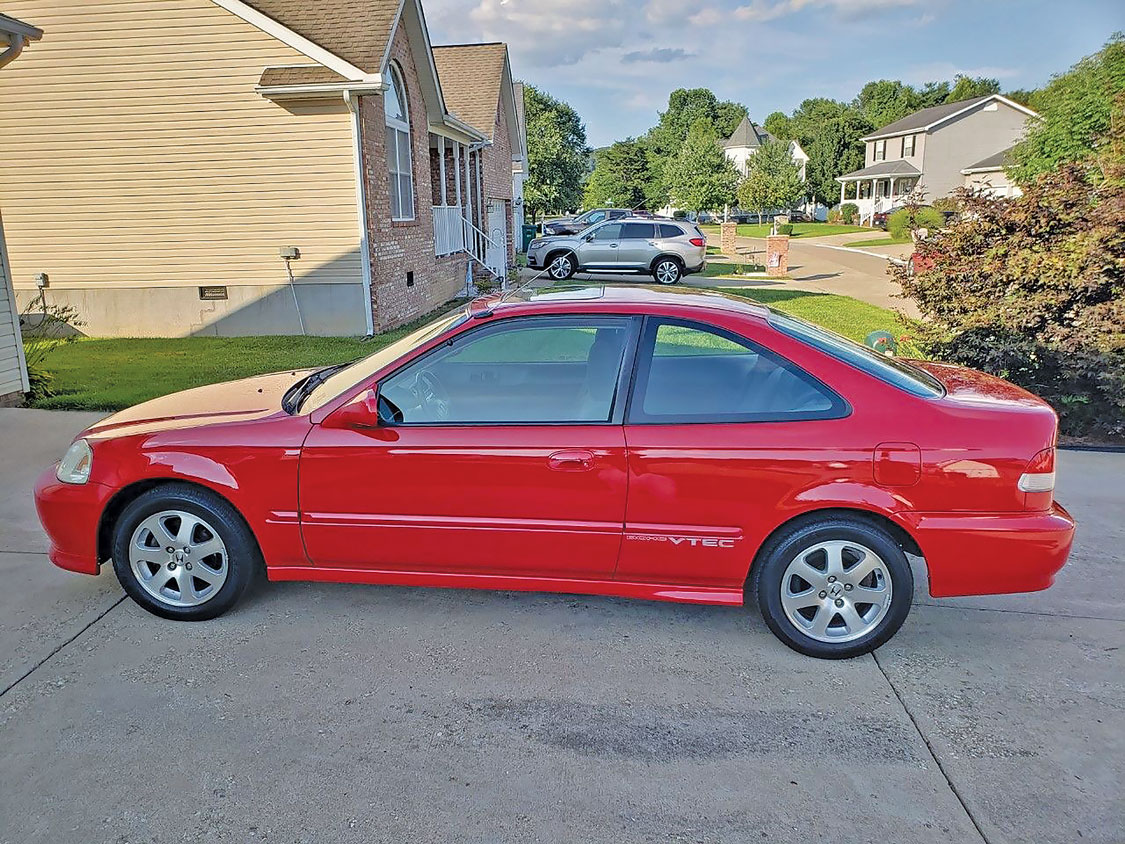
Think back to 1999. Four-cylinder sport compacts had overrun SEMA. Car magazines serving this market were 400 pages thick, with new ones being launched left and right. Every other Japanese econobox on the road was lowered and bedazzled with larger wheels and an aftermarket exhaust. No carmaker better understood this coming of age for a new generation of enthusiasts than Honda.
Its longstanding reputation for advanced engine technology was bolstered in 1990 when it introduced “VTEC” to the U.S. market in the Acura NSX. The acronym stood for variable valve timing and lift electronic control, a technology that allowed engines to have different cam profiles, optimized for both low- and high-rpm operation. As the decade went on, VTEC was rolled into more mainstream models such as the Acura Integra and Honda del Sol. It made their high-revving engines more powerful, with an exotic scream when the VTEC “kicked in.”
But there was a problem: Honda’s young, VTEC-crazed fans had thin wallets. They wanted a car with out-of-the-box performance and aftermarket potential but one that fit their finances. An $18,000 coupe with VTEC and an 8,000-rpm redline fit precisely. The sixth-generation Civic Si was an affordable driver’s car that unquestionably offered the most performance per dollar in the entry-level segment.
Solid fundamentals
Some enthusiasts were drawn to Si for its fundamental goodness: a double-wishbone suspension, the 1.6-liter VTEC 4-cylinder and a simple design that was unmatched in usability. But most just wanted a Civic because everybody else had one and they looked cool when slammed over big wheels. The suspension offered sufficient travel to tolerate being lowered and the Si handled well even when dropped a few inches. Though bolting on a header and bigger exhaust tended to yield more extra noise than power, it didn’t hurt.
The B16A2 engine in the Si was a marvel in stock form. It was only good for 160 horsepower, but it was rewarding to wring out. The VTEC switchover to the cam’s big lobes came at about 5,600 rpm, and if you shifted at the redline, the engine never dropped out of its powerband. And it made the right sound, a harmony of small parts moving at unreal speeds.
The only transmission available in the Si was a 5-speed manual, which had a direct (if long) action and a lower final-drive ratio than other Civics. There was no limited-slip differential because it wasn’t really needed with such modest output. Thicker anti-roll bars than other Civics helped keep the body level. Sticking with its less-is-more philosophy, Honda outfitted the Si with small 15-inch wheels and 195/55 tires. Many owners immediately replaced these with a plus-one- or plus-two-sized set.
Like most Hondas, the Si’s brakes were nothing special and tended to fade when pushed hard, but it was the only Civic available with rear discs. The Si was merely an average performer at the dragstrip, despite its popularity in such places at the time. With 111 pound-feet of torque, it couldn’t smoke the baloneys like a Fox-body Mustang. The Civic Si would hit 60 mph in about seven seconds and find its way through the quarter mile in the mid-to-high 15s at just under 90 mph.
Sixth-gen Civic coupes were (and remain) ubiquitous enough to be invisible. The visual tells that distinguish the Si are subtle: one unique color (Electron Blue), clear taillight lenses, alloy wheels and “DOHC VTEC” decals. But these are well-built and dependable cars with clean, simple and durable interiors that offer a sense of space greater than most cars their size.

Are you a Honda person?
Today, a collector-grade, low-mileage Si can fetch $50k at auction, defying the conventional wisdom of “once cheap, always cheap” but reinforcing the notion of “popular then, collectible now.” More-modest examples with higher mileage can be had for around $20k. It’s unclear exactly how many Civics in Si trim Honda sold, with most estimates saying 30,000, split evenly over the two model years and among the three colors. Finding one today isn’t hard, but unmolested examples are scarce, as many succumbed to the aftermarket-tuner craze.
The 1999–2000 model stands out among all generations of the Si. It arrived during the peak of Honda’s popularity, and it scored a bullseye in a youth market where other manufacturers struggled. If not actually the best, it is well poised to become the most collectible Si, especially as the “kids” raised on these cars are now a significant part of the collector-car market. ♦